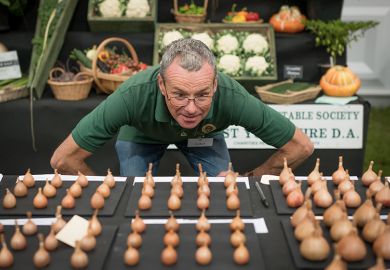The University of Cambridge has accepted a smaller proportion of state school pupils for the first time in a decade, shortly after revealing it was to scrap admission targets in this area.
The institution – which currently aims to admit at least 69 per cent of students from non-private settings – announced earlier this year that it was working on a new access plan that would instead take a wider range of factors into account.
Cambridge’s figures show that a total of 2,611 UK pupils were accepted for the 2023 undergraduate admissions cycle – of which 27.4 per cent were from independent schools, and 72.6 per cent from maintained schools.
The state school intake was down from 72.9 per cent in the 2022 recruitment round, and although slight, it marks the first fall since 2013 and the end of a decade of progress. However, the proportion of state school pupils is still the second highest in the time period.
The overall figures, which include a small number of applicants from a variety of non-school or college institutions within the UK, show that the total number of home students applying to Cambridge dropped by 7 per cent, which was the first fall since 2014.
Around two-thirds of applicants came from the state school system – with 25.5 per cent of them offered a place, and 20 per cent being successful. These rates were both up from 22.9 per cent and 19.6 per cent respectively last year, and the highest levels since 2020.
The offer rate for private school pupils increased from 20.9 per cent to 24 per cent, and the success rate from 18.9 per cent to 20.4 per cent.
A spokesperson for the university told the BBC in March that the university will continue to take into account an applicant’s schooling, but that other socio-economic factors will now also “be considered in the application process to indicate disadvantage of opportunity, as occurs at present”.
Cambridge has come under previous criticism for accepting few students from its local area, and for favouring state grammar schools with more socially privileged intakes.
The latest statistics show that the offer rate for grammar school pupils jumped from 28.8 per cent to 33.3 per cent – the highest of all school types.
The offer rate gap between grammar schools and comprehensive schools rose to its highest level in seven years. Those from selective secondary schools now make up a quarter of Cambridge’s UK intake.
State school children had more success in science subjects than in the arts, humanities or social sciences overall last year.
Those applying for four-year classics courses had the best success rates (88 per cent) of all subjects, while those applying for the three-year option had the worst (29.5 per cent).
Outside classics, the highest rates of acceptance for maintained schools came in history and politics (86 per cent), and archaeology (84.6 per cent).
Their lowest success rates were in music (44.9 per cent) and history of art (57.7 per cent).
And their success rates also varied massively across the 26 colleges at Cambridge that are not primarily for mature students. Lucy Cavendish College, Cambridge accepted 93.7 per cent of state school applicants, while Trinity College, Cambridge took in just 52.7 per cent.
A spokesperson for the university said: “The last few years have been exceptional in view of A-level grading patterns. If you look back to pre-pandemic years and, in particular, the 2019 cycle, then we continue to make progress on a range of widening participation measures.”
Register to continue
Why register?
- Registration is free and only takes a moment
- Once registered, you can read 3 articles a month
- Sign up for our newsletter
Subscribe
Or subscribe for unlimited access to:
- Unlimited access to news, views, insights & reviews
- Digital editions
- Digital access to THE’s university and college rankings analysis
Already registered or a current subscriber?








